Digital Goals: How Attention Economy Takes Advantage of Our Desire to Get Things Done
Goals and the Attention Economy
Have you ever been frustrated by seeing an incomplete profile on your LinkedIn profile page and felt an irresistible urge to finish it? I have been staring at mine for years. Right there in the middle of the page where they want me to see it. Showing me that I am 90% done. Shaming me that my profile strength is only “Intermediate”. Warning me that I am missing out on multiple professional benefits if I don’t complete it. What is missing? My exact geographic location.
Which I would like to keep to myself. It would not matter to my remote online work. But it would definitely compromise my privacy.
I know why LinkedIn – and every other platform I interact with online – wants to collect more data about me. Because more user data makes it easier to predict user behavior. Making the user a more valuable “data commodity” to sell for targeted behavioral advertising.
In the meantime, as we are working diligently on achieving digital goals our apps set for us, we stay engaged with the platform, keeping our eyes on the screen. In case of a complex task like LinkedIn profile, this may take hours. In case of multiplayer video game missions – days and weeks. The longer, the better.
In the attention economy, user engagement is a proxy for profitability.
Completing a profile to achieve a 100% status bar forces us to give up a lot of sensitive data the platform wants from us: after all, data is a commodity more valuable than oil. We get the fleeting satisfaction of seeing: “Congratulations! 100%”! They get to sell it for real $.
Checking email every 5 minutes and responding to everything immediately in a futile pursuit of “Inbox zero” goal is draining to productivity for the majority of knowledge workers. Add to that non-stop checking of multiple social media accounts, and one wonders, how any work gets done at all.
Somehow an honorable human activity of setting and achieving goals has been digitized into yet another tool of digital manipulation.
Sense of Progress: Our Desire to Get Things Done
Our brains just love the sense of progress. Taking the first step on the path toward a chosen goal and seeing it completed before our eyes is immensely satisfying.
When we get to the finish line, to the coveted 100%, the reward center in our brain releases dopamine – a neurotransmitter responsible for motivation. When dopamine hits our neurons, it brings with it feelings of enjoyment and motivates us to repeat the behavior. The problem is that the same brain chemistry is involved whether you’re working on finishing a master thesis or a level in a video game.
Goal setting is a function of a reasoning mind. High achievers operate by working hard on their goals and advancing in life – this has always been the case throughout the history of humanity. Our brain has been wired to feel satisfaction when we set a goal and make tangible progress toward it.
But the goals were always real. Leonardo da Vinci had to paint the Mona Lisa. Einstein had to develop his theory of relativity. Jefferson had to write the Declaration of Independence.
What about us? We need to complete our LinkedIn profile. Answer our emails. Collect our likes. Complete 8,000 levels in Candy Crush.
Our goal is often a progress bar on the screen.
Activating the same motivation as the noble goals of the past. But very often just tricking our brain to believe these arbitrary goals are as real and valuable as our personal and professional pursuits in the real world.
Digital media takes advantage of our desire to get things done.
How Habits are Formed
Behavioral psychology teaches us that habits are formed when three conditions are present at the same time: motivation, ability, and prompt. Digital goals and progress trackers are an example of user interface that hit all three:
- Motivation: → Achieve the goal and feel better about yourself!
- Ability: → The task is divided into small steps for the user to make easy progress
- Prompt: → A visual call to action to proceed toward the goal
Habits are formed when the behavior feels rewarding. What cements the behavior into a habit is our progress being celebrated on the screen. According to psychologist BG Fogg, the founder of Stanford Behavior Design Lab, if the behavior is celebrated, it sticks. It looks like this:
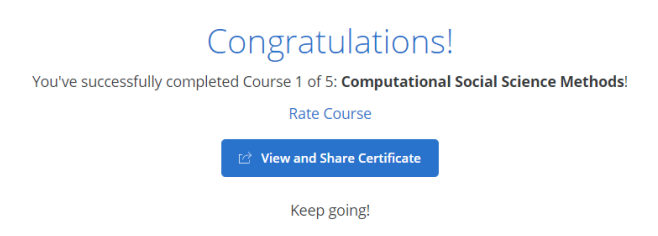
or this:
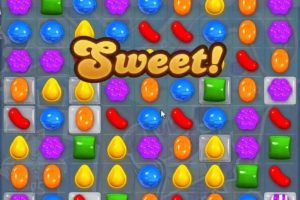
Our motivation to keep making progress is enforced by emotional rewards of completed steps. Achieving a 100% of the goal gives us a confidence boost. Our screens flash “Great job!”. “Great job!” – we congratulate ourselves too. Which in some cases is true – like an example of completing an online course.
But another level of Candy Crush was not a job.
Bells and whistles of celebrating our progress may come in various forms: badges, noises, flashing messages, prizes, scores. In the end, it is the same psychological mechanism as the sound of a jackpot win from a slot machine – designed to make gambling an addictive experience.
User Interface: Level Completed
Goal trackers are a feature of user interface (UI) designed to motivate users to make progress toward a goal and give us a sense of accomplishment.
The structure is quite simple: it shows where you have been – steps completed, where you are – steps in process, and a future finish line.
Motivation is often built in: in the LinkedIn example it is “Profile Strength” and frustration of seeing an unaccomplished goal.
Progress trackers are not to be confused with progress indicators that do not imbed any call to action for the user, but might simply show the status of delivery or download.
Goals crafted by attention engineers can come in other forms that can act like a trigger.
Ubiquitous notifications with their red circles of new activity appearing in the corner of app icons create goals for us to accomplish where there have been none before. A red dot is a call to action that is hard to ignore. It creates a new “to-do” item in your mental space that will be stuck in your head until you deal with it. Notifications force you to click on them in order to accomplish the goal of clearing these to-do items from your ever-growing digital agenda.
Notifications prompt us to keep on using the service. Respond to a message. Update our post. Tag someone. Thank those who liked our posts. Like them back. Read a related post. Respond to comments. Social media gives us an illusion of accomplishing a goal, but in fact it only distracts us from accomplishing real goals.
There is always an endless list of digital tasks to do for the benefit of the platform’s bottom line. While our real-life goals stand still. We are just too busy clearing our social media notifications to do anything else.
Real goals are increasingly replaced by digital ones, like reaching 1,000 followers on TikTok or 100 Likes to our Facebook post.
Examples of Digital Goals
LinkedIn: Complete a profile

Candy Crush: Obtain the target score
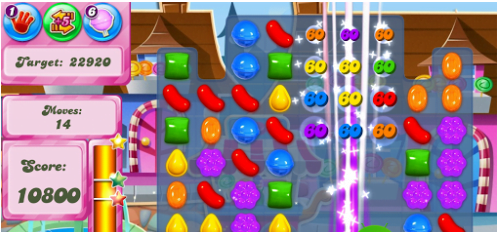
Kickstarter: Raise capital

Fitbit: Achieve daily number of steps
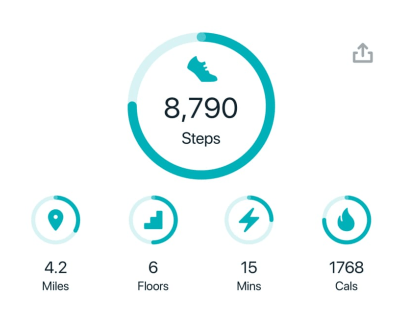
Google Analytics: Drive traffic to a website
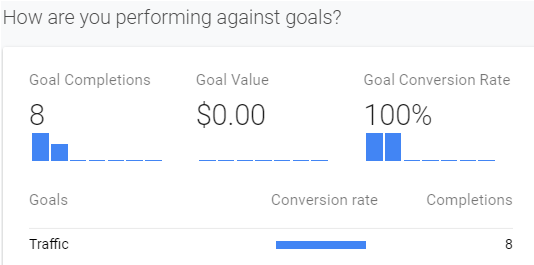
Coursera: Complete an online class

Online goals are everywhere, baked into pretty much every digital media product:
Social media → Collect likes and followers
News websites → Read all articles in the feed
Email Inbox → Answer all emails
Video games → Complete gaming missions
Website → Drive traffic
Netflix or YouTube → Watch all movies in a queue
Every platform taps into our drive for a sense of progress in some way that serves their user engagement.
But there are also deeper psychological forces at play when we pursue online goals.
Commitment: the goal of uninterrupted achievement
When you took the first step toward the goal, you activated your commitment to it. You owe it to your own integrity to finish and follow through. You are invested in the process. Committed.
The power of commitment becomes especially strong when the goal is public. Teens maintaining their Snapchat streaks (uninterrupted stream of daily communication) would take pictures of random objects just to keep the streaks going. Pursuit of the goal becomes its own obsession. They will give out their account passwords to friends to keep the steaks alive when they are unable to do so themselves.
Their goal of uninterrupted achievement is really the app’s goal of uninterrupted user engagement.
You have to be on the app daily – or the streak will die, and you are a failure – and a bad friend on top of that! An artificially designed goal that keeps millions of users hooked. That’s why streaks exist – for increased traffic and data mining, not for enhancing teen friendships.
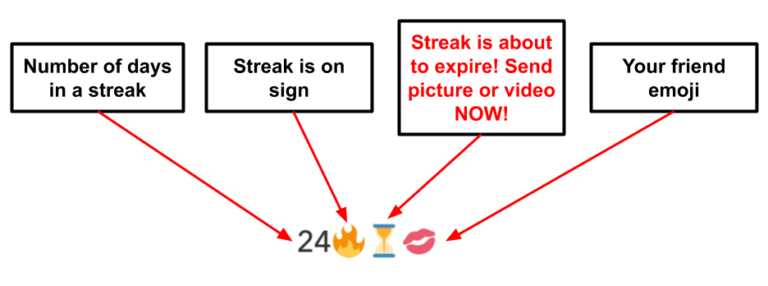
Public commitment to video gaming obligations can be a powerful tool of social influence. Gamers would spend 18 hours a day in front of the computer, completing gaming missions with their online teams. A sense of progress is built into the algorithm of the game: making the next level just out of reach – challenging enough to motivate the player to keep gaming, but not too difficult to make him frustrated and stop trying. A completed assignment in the virtual world is rewarded with a dopamine hit in the brain – meanwhile, real world progress is standing still.

Sunk Cost
You already invested a lot of effort into getting to 80% toward your goal, but if you don’t finish, you lose a 100% of the benefits. Your efforts were a waste of time. If you don’t finish the task the platform is giving you – completing an online profile, finishing a level in a game, answering all questions in an online survey or test…you lost the investment of time and effort you already made.
Avoidance of Pain
NOT achieving the goal has another name – failure. Failure is painful, and pain is something we naturally try to avoid. You face disappointment – in yourself. Frustration – I should have tried harder. Or worse – questioning your self-worth: “Am I actually that stupid and lazy?”.
Failure to achieve a goal generates tons of negative emotions and triggers our loss aversion. No one wants to be a loser. So we stay in the game. On the app. On the screen.
Pain is a powerful motivator.
Pursuit of Pleasure: Mailbox Zero
The desired outcome, of course, is getting the job done. To increase our ability to do so, tech designers set the next step tantalizingly close, just within reach. Easy enough for the user to reliably make progress.
Which feels great.
We love making lists for the fun of checking off the tasks we completed. I sometimes add items to my “to-do” list AFTER I finished the task – just for the pleasure of putting a check mark next to it! The sense of “DONE!” makes us feel accomplished – we have achieved something of value, we have not wasted our time!
A list of 8 notifications on my social media page taps into the same basic psychology – here is a list of actions to feel better about yourself after you deal with each one. They may not add any value to me, they are designed to increase my user engagement with the platform.
So, you completed a level in the video game. You finished your online profile. You have collected the number of followers you aspired to. You have responded to all your emails and notifications. Each action came with a shot of dopamine to the pleasure centers of your brain.
MAILBOX ZERO!
Now what?
Meaning: Now What?
Once you get to the finish line, you lose the sense of progress that kept you going in the first place – there is nothing to be going to. You have arrived.
If the user’s default mode is pursuing goals, new ones have to be established to take the place of the old goals already achieved. The alternative is aimlessness, meaninglessness.
Achieving one goal creates a vacuum that can only be filled with another goal.
Those who climbed to the top of the career ladder often discover that it is rather lonely and depressing there. They spent decades to get ahead, only to find no fulfillment in the end. Success can be a disappointment in itself. A brief moment of satisfaction when a milestone is accomplished. That’s it?
Once we run out of things to DO, we might actually have to look inside ourselves for some intrinsic joy of BEING, not extrinsic satisfaction of goal achieving.
But of course, digital media would not allow that to happen. No one reaches “mailbox zero” for long.
New digital tasks and to-do lists rush in to keep the user engaged – indefinitely. Features like infinite scroll do not have an end – a bottomless pit of newsfeed and social media updates – and can keep us distracted forever.
There are endless opportunities to pursue new goals – in every app, on every device. The longer users’ eyeballs are kept on the screen, the more advertising minutes could be sold for profit.
Goal-setting is prevalent in our society. It is applauded. Celebrated. Yet, there is clearly an overlooked dark underside to goal pursuit.
We can get addicted to achieving the goals to the detriment of our health and relationships. Workaholics neglect their families and ruin their marriages. Exercise addicts push through stress injuries well beyond the level of healthy fitness to achieve “20,000 steps per day” – wearable tech like Fitbit allows fitness goals to be quantified with precision. They can become an obsession, totally unrelated to health – and even detrimental to it. 19,000 steps a day just does not feel right, does it? You have to get out and clock in another 1,000. Even if it’s 2am. And beat your own records tomorrow. Possibly compare and compete with others.
All the while letting the device collect your valuable data.
Addicted gamers are advancing through the levels of the game – while missing out on achieving real tangible goals in their professional and personal life.
Even the very satisfaction of goal achievement can be easily snatched from you if you fall into the trap of social comparison. Have you achieved your goal of 1,000 followers on Instagram? Big deal. The Kardashians have hundreds of millions:
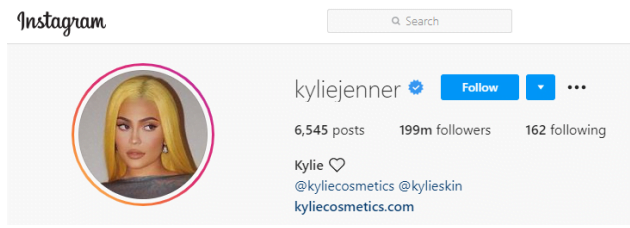
What’s the solution? Rational analysis. Choosing our digital goals with mindfulness and intention.
If a digital goal serves your values, by all means, keep working on it. If it distracts you from your real work and relationships or compromises your well-being, hide or delete the visual prompt. Or just learn to ignore it.
Not every goal is worth pursuing.


Greetings! Very helpful advice within this article!
It is the little changes which will make the most significant impact.
Thanks for sharing!